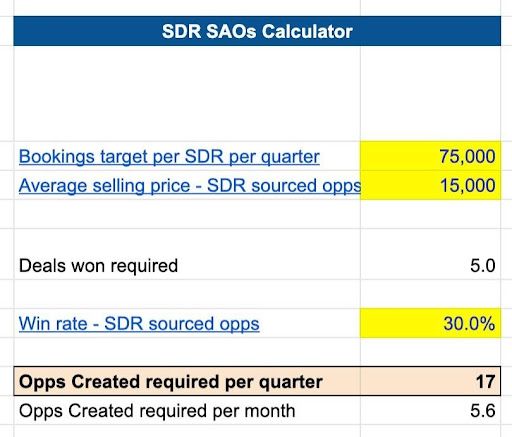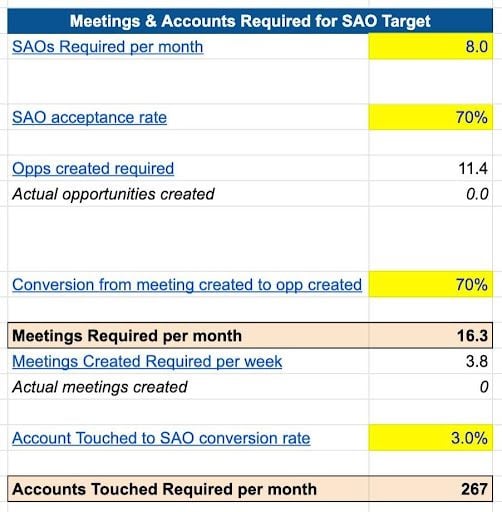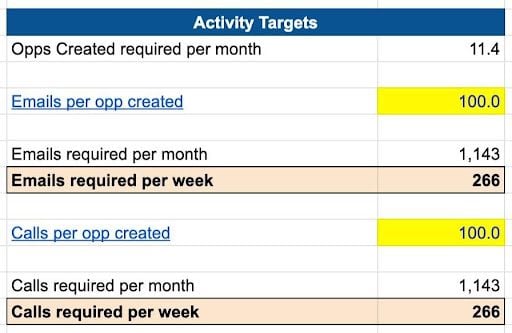If you manage sales development representatives (SDRs), a question that may frequently be at the top of your mind is whether SDRs are prospecting enough to hit quota. To know this, you need to know how effectively they’re prospecting, including understanding the quality and quantity of their prospecting activities. With that information, you can use your expected targets to work backwards, set relevant goals and make sure your reps are on track.
What Is SDR Prospecting?
Define Your Desired Outcomes
Within a sales organization, the role of the SDR is to qualify or generate opportunities that will eventually convert to bookings. If you start by setting a quota for your SDR team, then you’ll need to understand what they’re expected to actually deliver in bookings for the closing reps.
Alternatively, you may come up with a bookings target per SDR based on that SDR’s fully-loaded cost plus a margin target you’re trying to hit for the business. In either case, you can work backwards from the end goal to set targets.

Once you’ve defined the amount of bookings you expect your SDRs to source, and quantified that into how many opportunities they need to create, you can then use existing conversion rates to calculate the level of prospecting activities your SDRs need to complete.


I go into more detail about the calculation above in this goal-setting deep dive. The important point here is that you need to set data-driven goals for your SDR team that will help them reach their quota.
Track Your Employees’ Progress
It’s time to operationalize your goals. In practice this means sharing them with your team, helping your SDRs hit their goals and reviewing performance against those goals on a weekly, monthly and quarterly cadence in your team meetings and one-on-ones.
Once you know your targets for key metrics, it’s time to track and review them regularly. This is the work that ensures the team has clarity about your expectations and what they need to do to meet their targets.
In practice, this often means utilizing technology to build a portfolio approach to metrics tracking. This may mean you have certain dashboard reviews in team meetings and one-on-ones that are also saved as links in the calendar invites or shared agenda documents for those meetings. You may have other metrics tracking distributed through email or over Slack to maintain transparency while also reinforcing targets and performance expectations.
Setting goals and reviewing them regularly sets you and your team up for success by letting you know not just which reps need coaching, but what they need coaching on specifically. This metrics-driven approach also helps you build the case internally to invest in the data and technology you need to enable your SDRs to do their work most effectively.
Use Data to Advocate for Your SDRs
If one SDR on the team is struggling to hit quota, you can look at where they’re falling short of their goals to understand if it’s the quantity of their prospecting activity that’s causing the issue, or if their conversation rates from outreach to conversation, and conversation to opportunity, are lagging behind their peers. If the team is struggling across the board because they’re unable to reach out to the number of contacts they would need in order to hit their goal, you can bring that data to your internal leadership and make the case for investing in sales engagement software.
Reaching SDR prospecting excellence requires effective and data-driven coaching. Make sure you’re using the information at hand to improve your team’s processes and investing in the right technology to equip them to do their job well. This metrics-driven approach (rather than a gut or intuition-based approach) will help you define what success looks like and take high-impact action to help your SDRs succeed.





